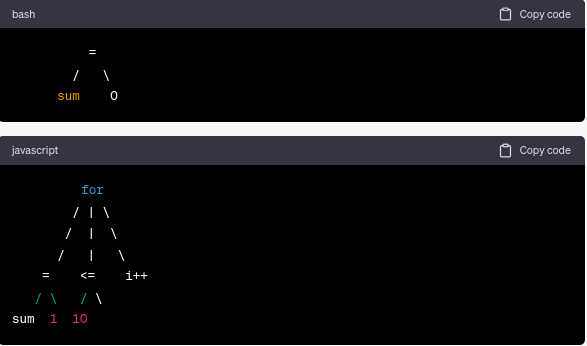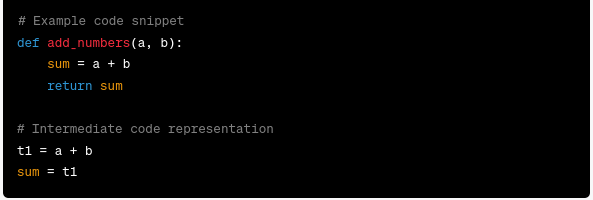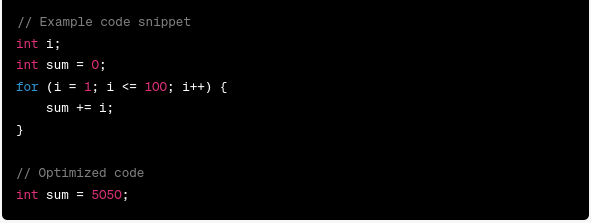For working professionals
For fresh graduates
- Study abroad
More
- Executive Doctor of Business Administration from SSBM
- Doctorate in Business Administration by Edgewood College
- Doctorate of Business Administration (DBA) from ESGCI, Paris
- Doctor of Business Administration From Golden Gate University
- Doctor of Business Administration from Rushford Business School, Switzerland
- Post Graduate Certificate in Data Science & AI (Executive)
- Gen AI Foundations Certificate Program from Microsoft
- Gen AI Mastery Certificate for Data Analysis
- Gen AI Mastery Certificate for Software Development
- Gen AI Mastery Certificate for Managerial Excellence
- Gen AI Mastery Certificate for Content Creation
- Post Graduate Certificate in Product Management from Duke CE
- Human Resource Analytics Course from IIM-K
- Directorship & Board Advisory Certification
- Gen AI Foundations Certificate Program from Microsoft
- CSM® Certification Training
- CSPO® Certification Training
- PMP® Certification Training
- SAFe® 6.0 Product Owner Product Manager (POPM) Certification
- Post Graduate Certificate in Product Management from Duke CE
- Professional Certificate Program in Cloud Computing and DevOps
- Python Programming Course
- Executive Post Graduate Programme in Software Dev. - Full Stack
- AWS Solutions Architect Training
- AWS Cloud Practitioner Essentials
- AWS Technical Essentials
- The U & AI GenAI Certificate Program from Microsoft
1. Introduction
6. PyTorch
9. AI Tutorial
10. Airflow Tutorial
11. Android Studio
12. Android Tutorial
13. Animation CSS
16. Apex Tutorial
17. App Tutorial
18. Appium Tutorial
21. Armstrong Number
22. ASP Full Form
23. AutoCAD Tutorial
27. Belady's Anomaly
30. Bipartite Graph
35. Button CSS
39. Cobol Tutorial
46. CSS Border
47. CSS Colors
48. CSS Flexbox
49. CSS Float
51. CSS Full Form
52. CSS Gradient
53. CSS Margin
54. CSS nth Child
55. CSS Syntax
56. CSS Tables
57. CSS Tricks
58. CSS Variables
61. Dart Tutorial
63. DCL
65. DES Algorithm
83. Dot Net Tutorial
86. ES6 Tutorial
91. Flutter Basics
92. Flutter Tutorial
95. Golang Tutorial
96. Graphql Tutorial
100. Hive Tutorial
103. Install Bootstrap
107. Install SASS
109. IPv 4 address
110. JCL Programming
111. JQ Tutorial
112. JSON Tutorial
113. JSP Tutorial
114. Junit Tutorial
115. Kadanes Algorithm
116. Kafka Tutorial
117. Knapsack Problem
118. Kth Smallest Element
119. Laravel Tutorial
122. Linear Gradient CSS
129. Memory Hierarchy
133. Mockito tutorial
134. Modem vs Router
135. Mulesoft Tutorial
136. Network Devices
138. Next JS Tutorial
139. Nginx Tutorial
141. Octal to Decimal
142. OLAP Operations
143. Opacity CSS
144. OSI Model
145. CSS Overflow
146. Padding in CSS
148. Perl scripting
149. Phases of Compiler
150. Placeholder CSS
153. Powershell Tutorial
158. Pyspark Tutorial
161. Quality of Service
162. R Language Tutorial
164. RabbitMQ Tutorial
165. Redis Tutorial
166. Redux in React
167. Regex Tutorial
170. Routing Protocols
171. Ruby On Rails
172. Ruby tutorial
173. Scala Tutorial
175. Shadow CSS
178. Snowflake Tutorial
179. Socket Programming
180. Solidity Tutorial
181. SonarQube in Java
182. Spark Tutorial
189. TCP 3 Way Handshake
190. TensorFlow Tutorial
191. Threaded Binary Tree
196. Types of Queue
197. TypeScript Tutorial
198. UDP Protocol
202. Verilog Tutorial
204. Void Pointer
205. Vue JS Tutorial
206. Weak Entity Set
207. What is Bandwidth?
208. What is Big Data
209. Checksum
211. What is Ethernet
214. What is ROM?
216. WPF Tutorial
217. Wireshark Tutorial
218. XML Tutorial
Phases of Compiler
Introduction
Compilers play a vital role in transforming human-readable code into machine-executable instructions. Understanding the various phases of the compiler involved in this intricate process is crucial for both aspiring programmers and seasoned developers. In this article, we will take you on a journey through the fascinating world of compiler design, exploring each phase in detail and providing examples, screenshots, and images to enhance your learning experience.
Overview
Compiler design is a complex field that involves several stages, each serving a specific purpose. The primary goal of a compiler is to translate high-level programming languages into machine code, enabling computers to execute programs efficiently. To achieve this, a compiler goes through six essential phases: Linear Analysis, Hierarchical Analysis, Semantic Analysis, Intermediate Code Generation, Code Optimization, and Code Generation. Let's delve into each phase and understand its significance.
6 Phases of a Compiler
A compiler typically consists of six essential phases that work together to transform high-level source code into executable machine code. Each phase plays a crucial role in the overall compilation process. Let's explore each of these phases in detail:
i) Linear Analysis:
Linear analysis, also known as lexical analysis or scanning, is the first phase of a compiler. Its primary task is to scan the source code character by character and identify meaningful tokens. These tokens can include keywords (e.g., "if," "while," "int"), identifiers (variable or function names), operators (e.g., "+", "-", "*", "/"), constants (numeric or string values), and punctuation marks (e.g., brackets, commas, semicolons). Additionally, linear analysis eliminates extra whitespace and comments from the source code.
Consider, for example, the following C code fragment:
The linear analysis phase would identify tokens such as "int," "sum," "=", "0," "for," "int," "i," "=", "1," "<=", "10," "i++," "{," "sum," "+=," "i," ";," "}".
Output:
55
ii) Hierarchical Analysis:
An abstract syntax tree (AST), also referred to as hierarchical analysis or parsing, is a tool for organizing the sequence of tokens produced by linear analysis into a hierarchical structure. The AST captures the source code's grammatical structure, including the relationships between tokens.
Using the preceding code example as an illustration, the hierarchical analysis phase would generate an AST representing the structure of the code. The AST would imply that "sum" is declared as a variable with an initialization expression of "0". In addition, it would signify the presence of a for loop with an initialization statement, a condition, an update statement, and the loop's code block.
The resulting AST for the specified code fragment would resemble the following:
The AST's hierarchical structure serves as a basis for subsequent analysis and transformation.
iii) Semantic Analysis:
In the semantic analysis phase, the compiler verifies the semantic validity of the source code. It verifies type compatibility, enforces scope constraints, and eliminates ambiguities and inconsistencies. This phase guarantees that the code adheres to the language's rules and constraints.
For instance, consider the following code fragment:
A type mismatch would cause the compiler to detect an error during the semantic analysis phase. The first line declares and initializes "x" as an integer variable. The second line, however, attempts to designate a string value ("hello") to "x," which is incompatible. The semantic analysis phase would identify this discrepancy and report it as a type error.
Checking for undeclared variables, resolving variable scope conflicts, ensuring correct function usage, and performing other language-specific tests to ensure the code's meaning and integrity are also components of semantic analysis.
iv) Intermediate Code Generator:
The intermediate code generator is a phase of the compilation process that produces an intermediate representation of the code based on the output of the semantic analysis phase (typically an abstract syntax tree or other high-level representation). This intermediate representation functions as a bridge between the high-level source code and the executable machine code. It is designed to be platform-independent and facilitates code optimization and portability across multiple architectures.
The primary objective of the intermediate code generator is to generate an easily modifiable and optimizable simplified and structured representation of the code. It removes some of the complexities of the high-level code and focuses on expressing the program's essential operations and control flow. This intermediate code can take various forms, including three-address code, quadruples, and bytecode.
Throughout the generation of intermediate code, the compiler executes operations such as expression evaluation, control flow management, and memory management. It allocates temporary variables and labels, translates control structures (such as loops and conditionals), and generates instructions that represent the program's behavior, independent of the target architecture.
Let's consider an example to illustrate this process:
v) Code Optimization:
Code optimization improves the intermediate code generator's efficiency and performance. Optimization evaluates the intermediate representation and employs approaches to reduce execution time, memory utilization, and program efficiency.
Optimization methods include:
1. Constant Folding: Compiling constant expressions and replacing them with their outcomes. Reduces runtime computations.
2. Loop Optimization: Unrolling, fusing, or exchanging loops to improve efficiency. These optimizations reduce loop overhead and increase cache utilization.
3. Dead Code Elimination: Removing code that does not affect program output. Unreachable or unutilized code is included.
4. Register Allocation: Optimizing memory access and efficiency by assigning variables to CPU registers.
5. Inline Expansion: Replacing function calls with function code to eliminate call and return overhead.
6. Data Flow Analysis: Analyzing data flow through the program and identifying optimization opportunities based on variable usage and dependencies.
The target architecture and optimization methodologies heavily influence code optimization. Optimized code should maintain program semantics and perform well.
Here's an example to illustrate the power of code optimization:
vi) Code Generation:
In the final phase of compilation, sometimes referred to as the synthesis phase of compiler, the compiler converts the optimized intermediate representation into executable machine code for the target architecture or platform.
The compiler selects instructions, allocates memory, and assigns registers during code generation. It converts the abstract program representation into hardware-executable instructions.
Code generation converts the intermediate representation into machine instructions that conduct the program's operations and control flow. The target architecture's instruction set, memory organization, and addressing modes determine these machine instructions.
The code generator uses earlier phase data to determine the most efficient machine code representation of the high-level program's behavior. It sets memory addresses for variables and data structures and generates code that interfaces with the target system's registers, memory, and I/O devices.
The code generation process converts the source code into executable code that can be loaded and run on the target platform.
Let’s look at the following example:
Code Optimizer
Together with the code generator, the code optimizer produces effective and optimized machine code. It uses techniques such as register allocation, loop unrolling, and instruction scheduling to improve the performance of the program. Consider the following example of code optimization:
Symbol Table
A symbol table is a data structure utilized by the compiler to store information regarding variables, functions, and other program entities. It provides a centralized repository for accessing and managing symbol-related data during the compilation's numerous phases. Symbol tables can be implemented using various data structures, such as lists, binary search trees (BST), and hash tables.
Symbol Table Management
Symbol table management involves creating, updating, and querying symbol tables during the compilation process. It ensures that all symbols are appropriately handled, their scopes are resolved, and their attributes are maintained accurately. The management of symbol tables directly influences the compiler's ability to analyze and generate code correctly.
Here's a simplified flowchart illustrating the basic steps involved in symbol table management within a compiler:
Dissecting the flowchart:
1. Start symbol table management.
2. Create Symbol Table: The symbol table is initialized to contain symbols found during compilation. It contains identifiers, variables, functions, constants, and their characteristics.
3. Retrieve Symbol Entry: When a symbol appears in code, the compiler attempts to retrieve its symbol table entry.
4. Is Symbol Found?: The compiler checks the symbol table entry.
- If yes, the compiler can type check, scope resolve, or generate code for the symbol.
- If No: Undefined symbol. The compiler errors because the symbol is undefined or out of scope.
5. Perform Symbol Actions: If the symbol is found, the compiler accesses its characteristics, does type inference, or generates code based on its usage.
6. Report Error: If the symbol is not in the symbol table, the compiler raises an error, indicating that it is undefined or undeclared.
This flowchart streamlines symbol table management for compilers. The complexity and implementation of the symbol table are dependent on the language and compiler design.
List
A list is a straightforward data structure that organizes its elements in a linear fashion. Lists can be used to represent symbol tables and other information pertinent to compiler design. They allow for straightforward traversal and sequential access to the stored elements.
Binary Search Tree
A binary search tree (BST) is a hierarchical data structure that makes searching, insertion, and deletion operations efficient. BSTs may be used to implement symbol tables in the context of a compiler. They provide quick symbol lookup and retrieval based on their keys.
Hash Table
Hash tables are data structures that expedite the retrieval of values based on the variables that are associated with them. By using a hash function to map keys to specified memory locations, hash tables are able to allow real-time access to the stored elements. Hash tables play a significant role In the implementation of symbol tables and other compiler-related operations.
Error Handling Routine
During the compilation process, the compiler may run into several errors, like mismatched types, syntax errors, or undeclared identifiers. Error handling routines are expected to detect and report these errors to the user. The crucial role that they play in providing meaningful error messages helps programmers debug their code effectively.
Run Time and Compile Time
The concepts of run time and compile time are fundamental in computer science and software development. Run time refers to the period during which a program is executed or runs on a computer system. It encompasses the actual
The terms "run time" and "compile time" pertain to different phases within the lifecycle of a program. The compilation process encompasses three main phases: source code analysis, transformation, and conversion to machine code. Runtime refers to the process of executing the code on the designated machine. The main purpose of a compiler is to enable a smooth transition from the compilation phase to the execution phase.
The Utilization of Compilers in Various Domains
Compilers find application in diverse domains, encompassing software development, system programming, and embedded systems. Programmers possess the ability to create code in high-level programming languages, which can subsequently be transformed into optimized machine code through the utilization of compilers. Compilers play a crucial role in enhancing program performance, improving developer productivity, and enabling the development of applications that can run on multiple platforms.
Conclusion
Comprehending the complex transformation of source code into executable programs requires a comprehensive understanding of the phases of a compiler. By becoming familiar with each phase, including linear analysis, hierarchical analysis, semantic analysis, intermediate code generation, code optimization, and code generation, you gain valuable insight into the inner workings of compilers. These insights enable you to write efficient code, optimize performance, and investigate the extensive programming possibilities.
FAQs
1. What is meant by the synthesis phase of a compiler?
The synthesis phase, or code generation, is the last phase of a compiler. It converts the optimized intermediate code into platform-specific machine code for the target platform.
2. Can you explain the structure of a compiler with examples?
Visualize the structure of a compiler as a pipeline, with each phase receiving input from the preceding phase and producing output for the subsequent phase. This sequential sequence guarantees the efficient transformation of source code into machine code.
3. What are the machine dependent phases of a compiler?
The target machine architecture or platform influences machine-dependent compiler steps. Code creation and target-specific optimization are included. Code generation converts optimal intermediate code into target machine-specific machine code. Target-specific optimization employs the target machine's qualities and characteristics to improve code performance and efficiency.

Author|900 articles published


upGrad Learner Support
Talk to our experts. We are available 7 days a week, 9 AM to 12 AM (midnight)
Indian Nationals
1800 210 2020
Foreign Nationals
+918068792934
Disclaimer
1.The above statistics depend on various factors and individual results may vary. Past performance is no guarantee of future results.
2.The student assumes full responsibility for all expenses associated with visas, travel, & related costs. upGrad does not provide any a.











